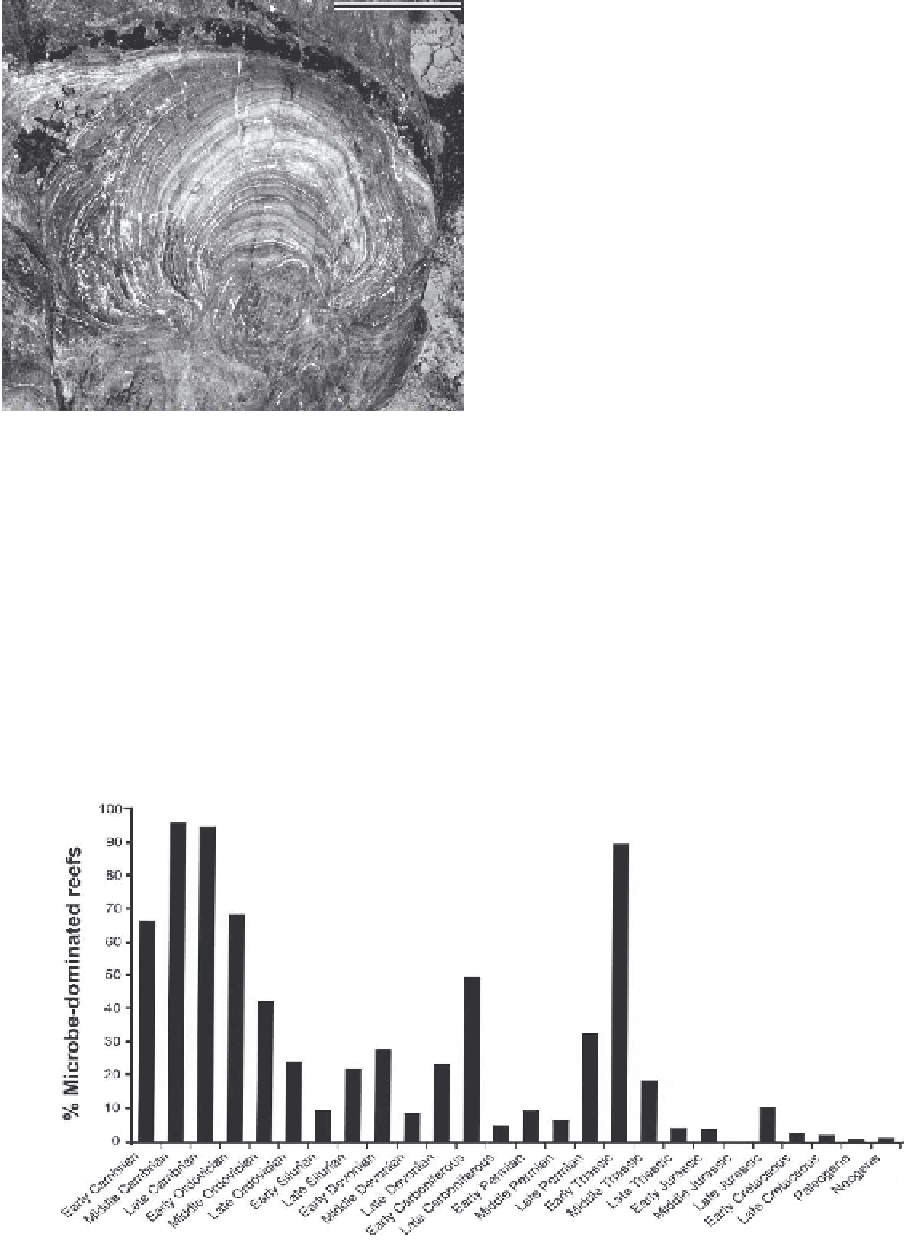Geology Reference
In-Depth Information
ter settings can be found in the papers included in the
SEPM Special Volume 72 on Phanerozoic Reef Pat-
terns (Kiessling et al. 2002).
The decline of stromatolites near the Precambrian/
Cambrian boundary and the development of Cambrian
and Ordovician tidal carbonates have been explained
by competitive or noncompetitive restriction of stro-
matolites by grazing and burrowing organisms, e.g. gas-
tropods (Garrett 1970; Mazzullo and Friedman 1977),
but this interpretation has been strongly criticized (Pratt
1982; Browne et al. 2000; Rowland and Shapiro 2002).
The microbial reef ecosystem flourished after the col-
lapse of the archaeocyath reefs from the Middle Cam-
brian to the Early Ordovician, covering a period of about
40 Ma. Many Cambrian inter- and subtidal shelf car-
bonates and reefs exhibit dendrolitic, stromatolitic or
thrombolitic textures (Aitken 1967;
Ahr 1971;
Soudry
and Wissbrod 1993; Pl. 82/2, 4). Stromatolites occur
throughout the Ordovician whereas thrombolites had a
constant decline during the Early and Middle Ordovi-
cian, subsequent to their peak in the Late Cambrian
(Webby 2002). The Silurian (Soja 1994) and Devonian
(Browne and Demicco 1987) exhibit a marked decrease
in the frequency of microbial carbonates, except dur-
ing the upper Late Devonian where calcimicrobes and
stromatolites contributed significantly to the formation
of carbonate platforms during times of major environ-
mental changes (Playford et al. 1976; Whalen et al.
2002). Microbial shelf and reef carbonates again be-
Fig. 9.4.
Late Cambrian (La Flecha Formation) stromatolite
from the Eastern Precordillera, between San Juan and
Mendoza (Argentina). Scale is 50 cm. Courtesy of W.
Buggisch, Erlangen.
inger and Knoll 1999;
Hoffman 2000; James et al. 2000;
Semikhatov and Raaben 2000; Sumner 2000). By the
end of the Precambrian, stromatolite development had
declined, but stromatolites and other microbial carbon-
ates were still important in the formation of reef struc-
tures in various parts of the Phanerozoic, as shown in
Fig. 9.5 and summarized by Riding (2000). A wealth
of new data on Paleozoic and Mesozoic microbial car-
bonates and their distribution in shallow- and deep-wa-
Fig. 9.5.
Changes in the microbial control on limestones during time expressed by the percentage of microbial reefs (based
on the evaluation of more than 2800 Phanerozoic reefs; see Kiessling 2002). The contribution of microbes to the formation
of reef carbonates varied during the Phanerozoic. Stromatolites and calcimicrobes were abundant in Cambrian, Ordovician
and Early Carboniferous carbonates, and common to abundant in periods following worldwide extinction events (Famen-
nian; Early Triassic). The importance of microbial carbonates in reefs decreased after the Jurassic.

